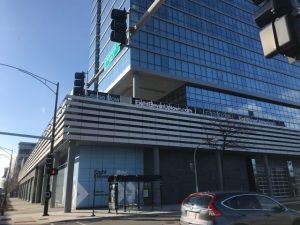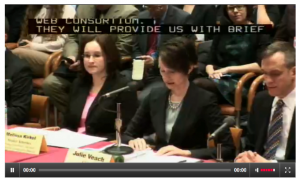Officials at a Far West Side organization fear if client demand continues to rise, more and more recently released prisoners will be left fending for themselves.
Roger Ehmen, director of Westside Health Authority’s Prisoner Re-Entry Center, said a recent jump in numbers shows the dire need for the program in Austin.
Ehmen said the center saw an increase of 104 percent more clients over the last two years. In 2008, the office helped just over 5,000 clients, while last year the program assisted close to 11,000.
The biggest concern now is that the numbers will continue to rise, and many more ex-offenders in need will be left without services.
“The problem is we don’t have the capacity to see more. There isn’t enough staff or room in our facility,” Ehmen said. The current facility is a one-story, seven office space that makes use of cubicles in its open areas.
Ehmen said the center never turns clients away, with an average of 28 new clients coming in the door each day and 600 each month.
“And here’s the problem: the waiting list for even 28 new clients a day can take up to two or three weeks. People who don’t want to wait either give up or go somewhere else. And they may not get the attention they need,” Ehmen said.
Nine full-time employees — including job placement coaches, case workers and aides — work at the center.
The Westside Health Authority’s Prisoner Re-Entry Center has been operating in the Austin neighborhood for nearly 10 years. Austin has the one of the highest number of ex-offenders in the state of Illinois, said Ehmen, and according to the Westside Health Authority, there are over 300 individuals returning to Austin from prison each month.
The program, funded by the city, is faith-based and offers assistance in re-entry, such as: job placement, training, mentorship, GED and ACT classes, and counseling. The program is 100 percent free to clients and also includes assistance with food, clothing and shelter.
Ald. Emma Mitts (37th) said programs like the center are crucial in areas such as Austin.
“In our kind of community, we have to meet the needs of these people because they represent us. We can’t run from it,” Mitts said. “We must work hard to ensure that adequate resources are available in the returning communities to assist those most at risk for recidivism.”
Micheal Tidmore, who works with new clients at the Teamwork Englewood Community Re-Entry Resource Center, said its program has also seen a rise in new clients.
Tidmore was unable to give specific numbers but said the last few months have shown a substantial increase in released prisoners needing assistance.
Ehmen said he believes the rise in numbers can be attributed to multiple causes, including an increase in released prisoners due to state budget cuts, along with people being more aware of the services offered to ex-offenders.
“In some ways, we are a product of our own success,” Ehmen said. He said the center has proven successful because of its faith-based nature, where the center couples traditional training with spiritual learning.
“Most of the ones who really make it, who have been very successful, have also taken on the spiritual side of this,” Ehmen said.
The Westside Health Authority has secured land with hopes of building a larger, more comprehensive prisoner re-entry center once funding is secured, said Ehmen, “but that doesn’t help us in the short term.”
Ehmen said the center has no plans for when they will break ground on the project.
Check out Chicago Talks’ related story: West Side Program Helps Ex-Offenders Get a Second Chance





















Be First to Comment